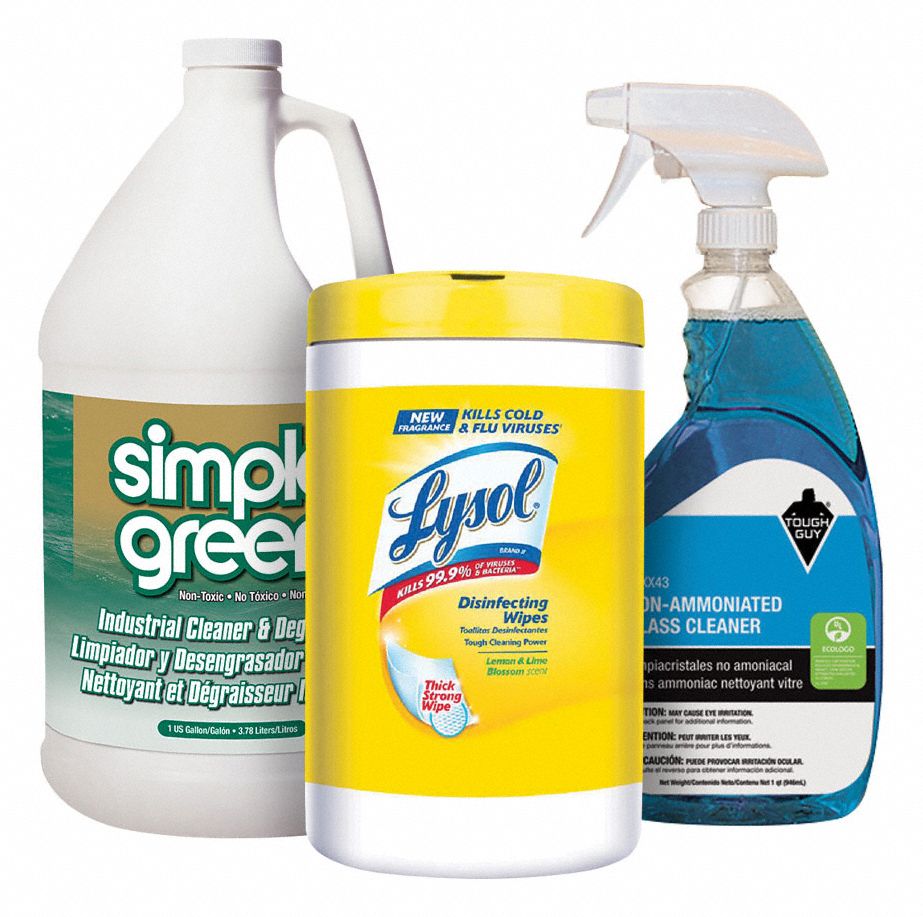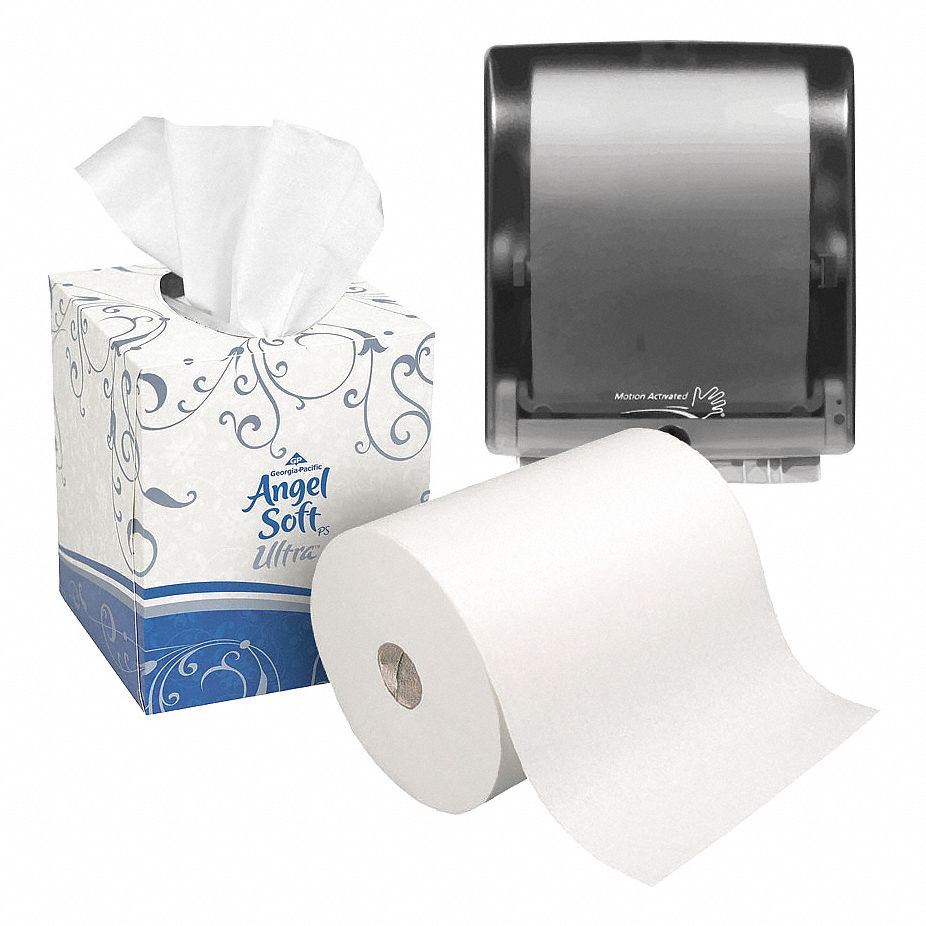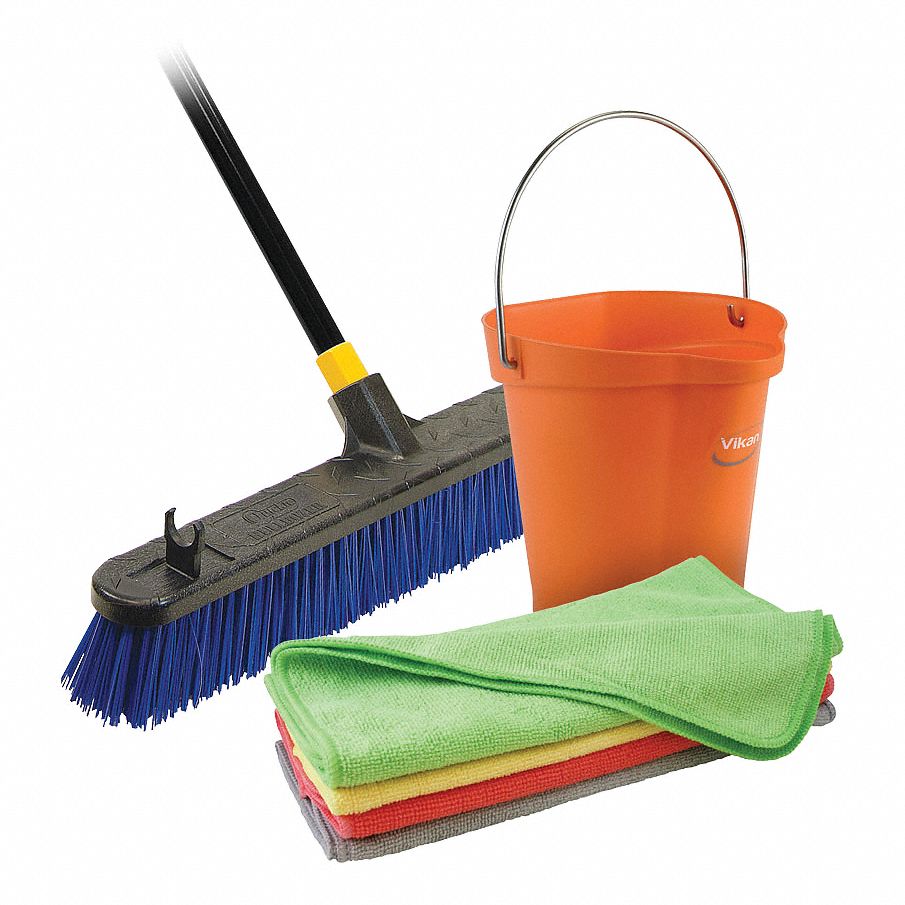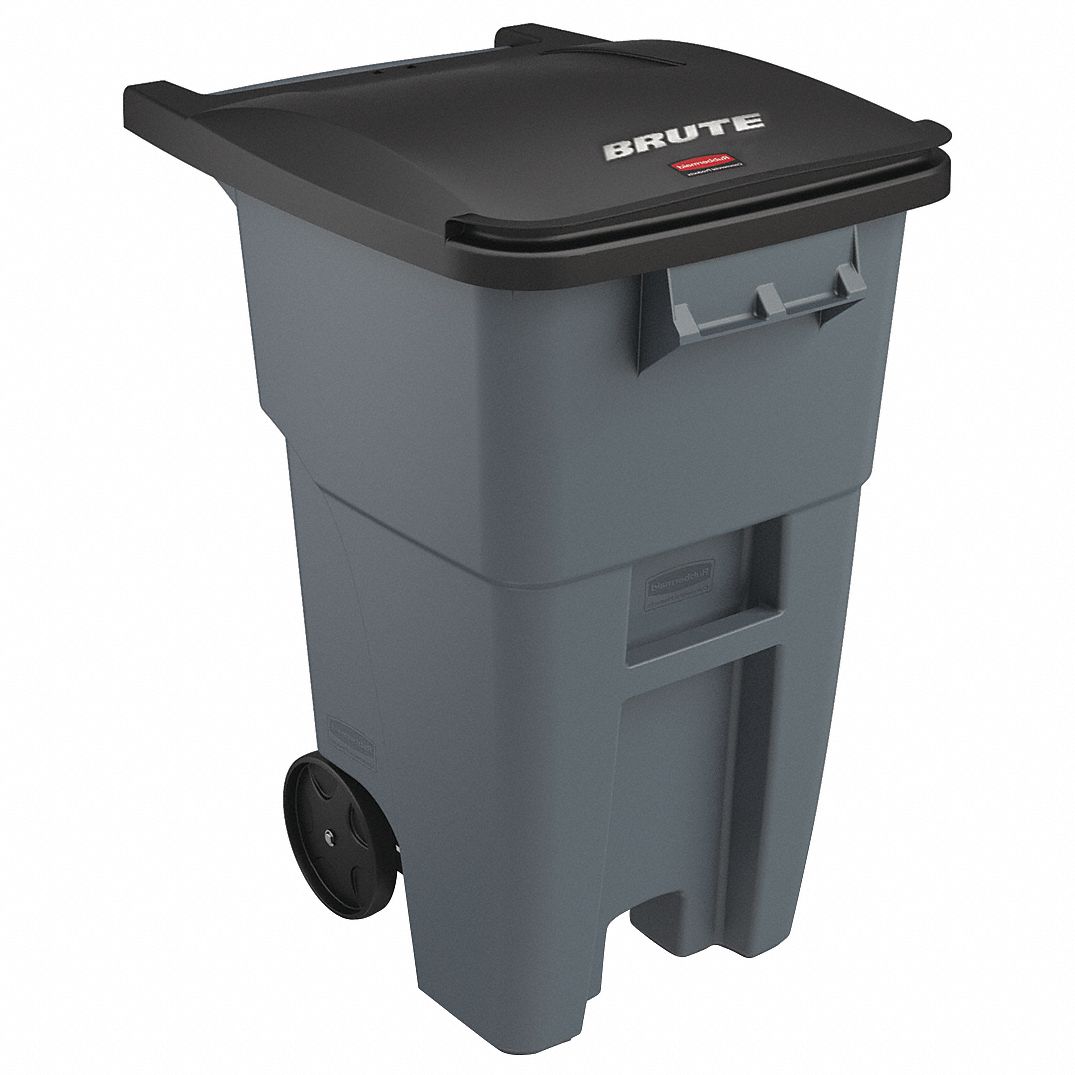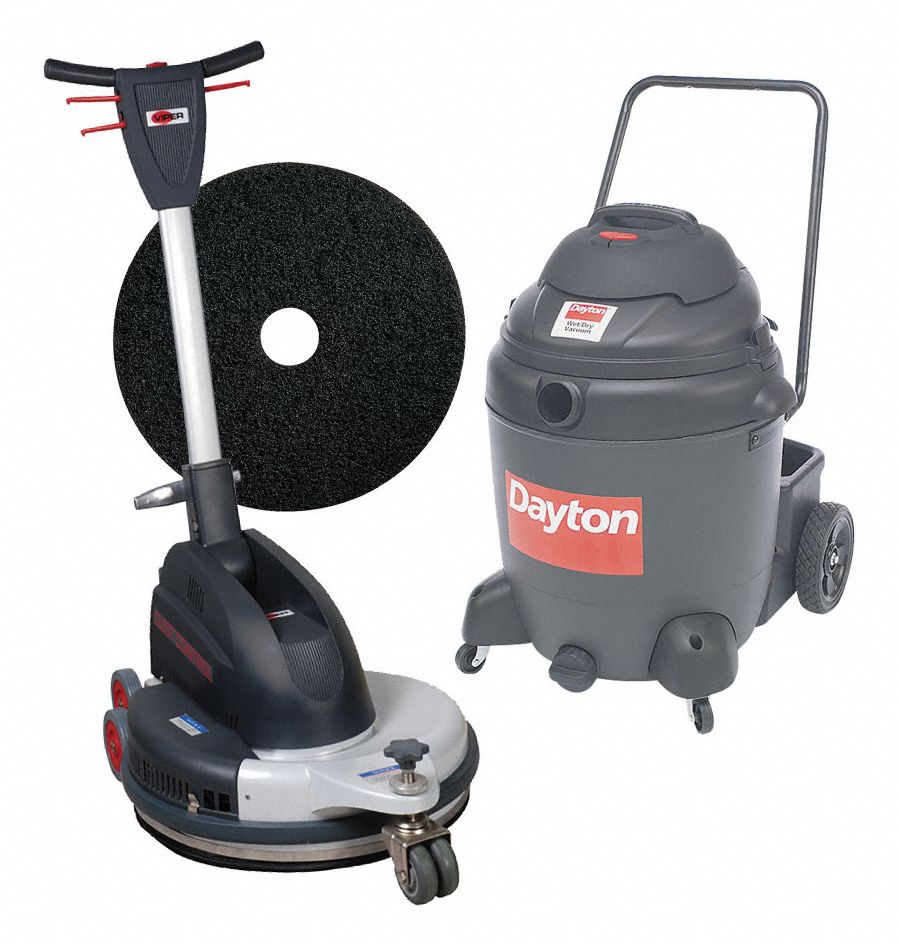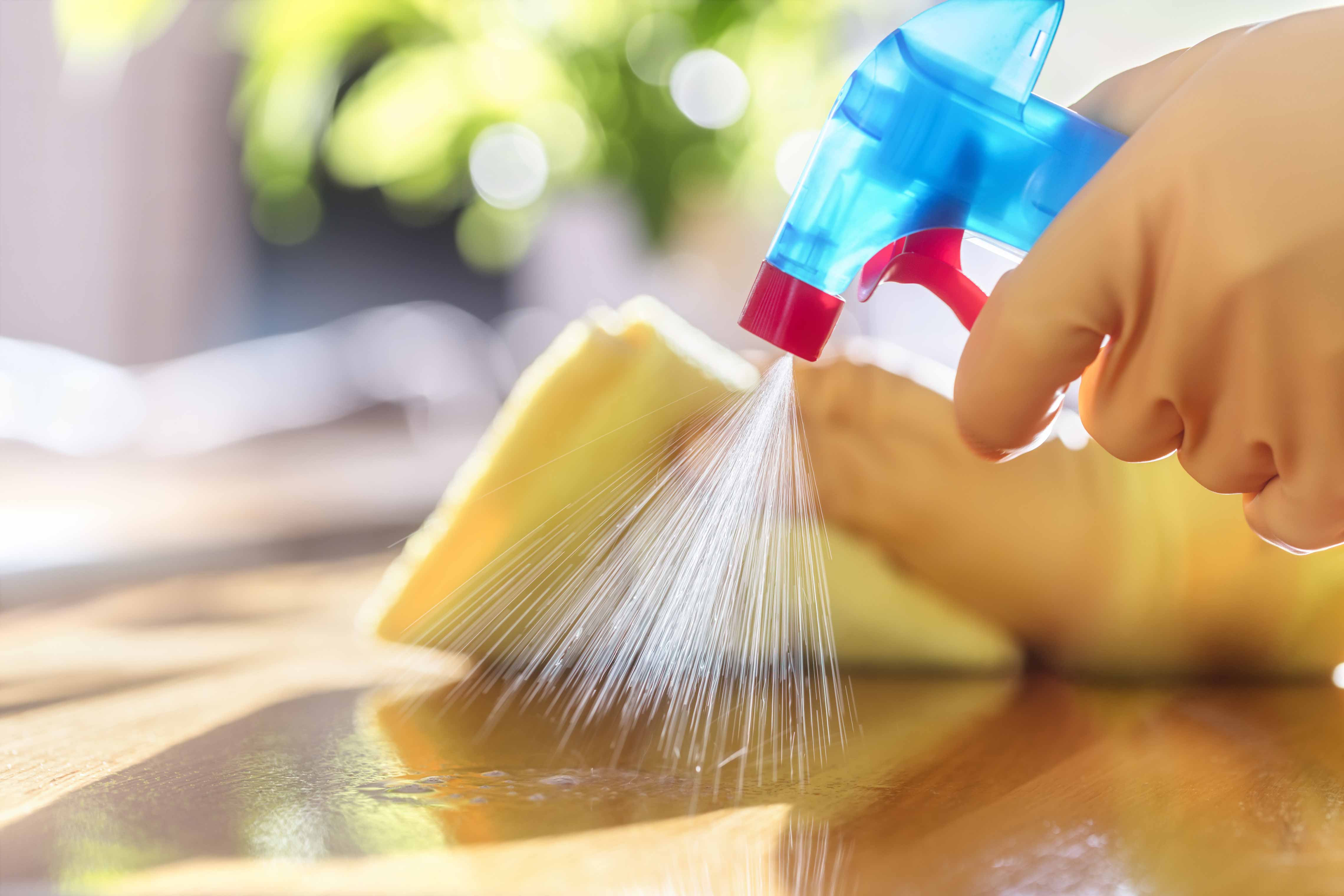

How to Disinfect and Sanitize Public Areas
By Grainger Editorial Staff 4/20/20
Your facility may look clean, but if it hasn't been disinfected, commonly touched surfaces throughout the workplace could be harboring germs. Reducing the risk of disease transmission on the job means taking a new approach to cleaning, with a greater emphasis on disinfection. These seven tips can help your business begin disinfecting effectively:
- Clarify Your Goals
Your facility’s cleaning is likely focused on the dirtiest areas. Usually, when we say “cleaning,” we mean physically removing dirt and dust. Your custodial staff may spend most of their shift mopping floors, wiping down splatter, and cleaning spills in the production area.
But to control dangerous microbes that can cause illness, the Centers for Disease Control and Prevention (CDC) recommends taking specific action to kill germs before they can move between workers. A two-step clean-and-disinfect process is recommended, using a detergent-based cleaner to physically remove dirt from surfaces, followed by a wipe-down with a separate disinfectant, like a bleach solution, that will kill the remaining germs.
A focus on disinfection means paying attention to surfaces that may not appear dirty at all. The CDC advises workplaces to routinely disinfect every surface that is frequently touched—door handles, machinery control panels, and even the break room TV remote. All can become hotspots for germs.
Keep in mind: time is not a disinfectant. Germs can easily survive on surfaces until the next shift arrives. A study on the H1N1 influenza virus published in the American Journal of Infection Control found that droplet-borne viruses can live for 48 hours on wood surfaces, one day on plastic and stainless steel, and over eight hours on fabric. Once a surface is contaminated, assume it will stay contaminated until it is disinfected.
- Protect Your Crew
When your custodial staff is focused on cleaning and disinfecting high-touch areas, they will be at high risk of exposure to the germs they are working to eradicate. The CDC advises strict adherence to PPE protocol to protect cleaning crews in potentially contaminated workplaces from getting sick. Ensure that gloves and eye protection are readily available, and reinforce training on safely putting on and taking off protective equipment. - Design for Hygiene
In the long run, design choices can make disinfecting the workplace easier. According to the CDC, for hard and non-porous materials, visibly dirty surfaces should be cleaned prior to disinfection. Then the EPA’s list of disinfectants specifically for use on hard, non-porous surfaces should be consulted. You should consider removing soft and porous materials like carpeting, rugs or materials in high traffic areas and disinfect the materials if appropriate products are available.
And remember, pathogens can colonize in hard-to-clean crevices. Be sure to replace chipped and cracked fixtures as soon as possible—they can be extremely difficult to disinfect. When selecting new door handles and equipment controls, opt for simple designs that feature large, flat faces and smooth surfaces that can be wiped down on a single pass.
- Clear the Air
Your building’s HVAC system plays a surprising role in workplace hygiene. According to ASHRAE, ventilation and filtration provided by HVAC systems can reduce the airborne concentration of viruses. The organization advocates using HEPA filters in healthcare settings to reduce airborne pathogens, and raising indoor humidity levels above 40 percent to reduce the lifespan of droplet-borne viruses. Changing your HVAC system’s settings to raise the indoor humidity level, using HEPA filtration, and increasing the ventilation of moist outside air can greatly reduce the survival time of viruses in your building. Learn more about virus-fighting HVAC strategies. - Involve Everyone
The CDC recommends promoting hygiene among your workforce to keep microbes from contaminating surfaces. Your facility may not be able to adhere to a strict glove regimen, but workers can be encouraged to take responsibility for keeping their hands clean and disinfecting workstations throughout the day.
Make sure that your facility’s sinks stay well stocked with soap and hand towels, and consider adding alcohol-based sanitizer stations throughout the workplace. You might also maintain a supply of disinfecting wipes at workstations and encourage employees to clean frequently touched surfaces before and after each shift.
- Pick Up the Pace
Frequent disinfection will reduce your workforce’s potential exposure to pathogens. As your custodial crew’s focus shifts from cleaning to disinfection, you may want to increase the frequency of disinfecting high-touch surfaces.
The CDC recommends disinfecting frequently touched surfaces on a regular basis. Attending to high-touch surfaces between shift changes can help stop the spread of disease.
- Read the Label
Finally, be sure to use an appropriate disinfectant. The EPA maintains a list of over 500 disinfectant products certified to kill viral pathogens, with active ingredients ranging from citric acid to ammonium chloride. They’re all certified to disinfect, but just swabbing down the surface may not be sufficient—be sure to follow the product’s instructions and allow time for the disinfectant to work. To be effective, many certified products require wetting surfaces for several minutes.
When adopting a new disinfectant, be sure to stay in compliance with OSHA regulations for hazard communication. Some cleaning chemicals are caustic or poisonous, requiring extra precautions and greater PPE coverage. Also, make sure your new disinfectant is compatible with the surface materials you need to clean—some strong disinfectants can discolor and damage hard plastic surfaces.
Disinfect to Protect: Ultimately, protecting your workforce from droplet-borne contagions will mean adopting new priorities for your entire staff. Disinfection requires taking a different approach, with shared responsibility and constant vigilance. Cleaning is no longer about mopping up the messes you can see. It's about taking care of invisible contamination before it spreads.![]()
The information contained in this article is intended for general information purposes only and is based on information available as of the initial date of publication. No representation is made that the information or references are complete or remain current. This article is not a substitute for review of current applicable government regulations, industry standards, or other standards specific to your business and/or activities and should not be construed as legal advice or opinion. Readers with specific questions should refer to the applicable standards or consult with an attorney.

